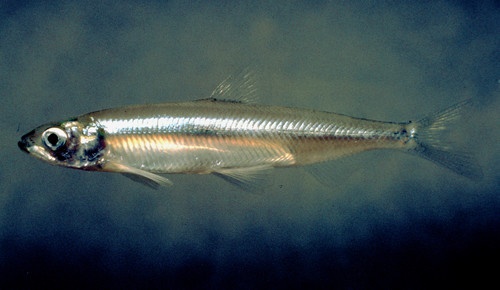
Delta smelt, a threatened species under the Endangered Species Act that is covered in the BiOps.
Last Friday, the U.S. District Court for the Eastern District of California issued an order on competing motions in the coordinated cases challenging the 2019 biological opinions (BiOps) that govern operation of California’s State Water Project and the federal Central Valley Project (Projects). The hefty order, which spanned over a hundred and twenty pages, attempted to distill the thousands of pages of briefing the parties submitted on the matter. Admittedly, stakes were high: these two Projects supply water to more than 25 million Californians and to farmers across the Central Valley.
The 2019 BiOps at issue were written by the U.S. Fish and Wildlife Service and the National Marine Fisheries Service and addressed the effects of ongoing Project operations on species listed under the Endangered Species Act. Plaintiffs—the State of California, the California Natural Resources Agency, the California Environmental Protection Agency, and environmental and fishing groups—took the position that these BiOps were flawed because they did not adequately consider the harm that the Projects could cause to listed species. After the change in administration at the federal level, the federal and California governments sought to develop a common position. This led the federal agencies to reinitiate consultation with the intent of developing new biological opinions by late 2024 and prompted the federal and state agencies to develop an interim operations plan, or IOP, to govern operations in the near term.
After summarizing the positions of all parties and their competing views of the appropriate legal standard of review, the court ultimately granted the federal agencies’ request to remand the BiOps without vacating those agency actions. At the same time, the court adopted the federal and state agencies’ IOP, which it described as a “reasonable, fair, and equitable” method of resolving the dispute for the time being. Interestingly, by adopting the IOP, the court allowed the federal agencies to avoid compliance with the Endangered Species Act and National Environmental Policy Act in the near term and characterized the federal and state agency position as a temporary settlement.
The case is stayed until the end of the water year (September 30, 2022), at which point the parties will have the opportunity to return to court to battle over operations in the next water year.
- Partner
Paul Weiland is Assistant Managing Partner and a member of the Environment & Land Use Group. He has represented clients – including public agencies, publicly regulated utilities, corporations, trade associations and ...
Nossaman’s Endangered Species Law & Policy blog focuses on news, events, and policies affecting endangered species issues in California and throughout the United States. Topics include listing and critical habitat decisions, conservation and recovery planning, inter-agency consultation, and related developments in law, policy, and science. We also inform readers about regulatory and legislative developments, as well as key court decisions.
Stay Connected
 RSS Feed
RSS Feed
Categories
- Alternative Energy
- Bald and Golden Eagle Protection Act
- Budget
- CEQA
- CESA
- Climate Change
- Congress
- Conservation
- Construction Projects
- Consultation
- Continuing Education
- Court Decisions
- Critical Habitat
- Delisting
- Endangered Species Act
- Event
- Fish & Wildlife Service
- Freedom of Information Act
- Government Administration
- Legal
- Legislation
- Listing
- Litigation
- Migratory Bird
- National Marine Fisheries Service
- NEPA
- Off Shore Wind
- Pacific Northwest
- project
- Publications
- Regulatory Reform
- Sacramento-San Joaquin Delta
- SEPA
- Speaking Engagements
- Supreme Court
- Texas
- Timberland
- Water Issues

